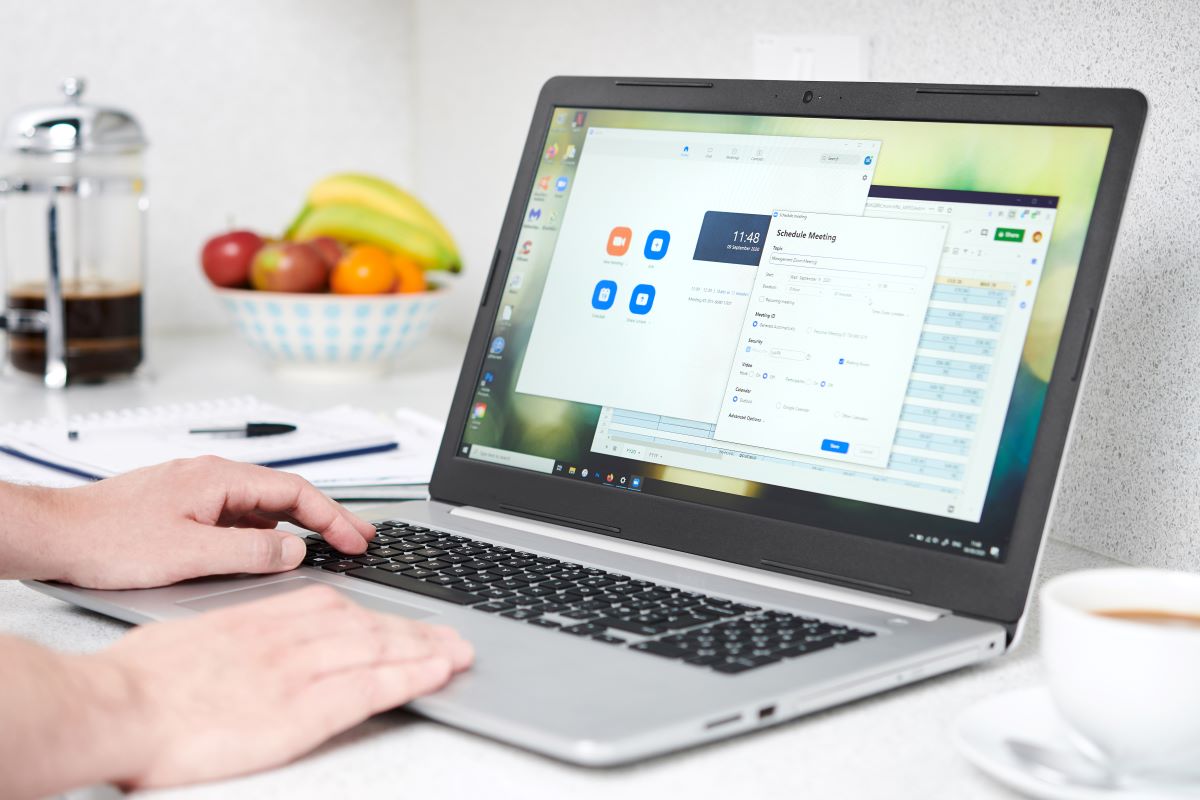
Demand for PCs is still not dwindling, even 18 months after the start of the COVID-19 pandemic.
Image: Future Publishing / Contributor / Getty Images
Even with lockdowns lifting and employees gradually leaving their full-remote-working setups to make their way back into the office, PC sales are showing no sign of subsiding.
Market intelligence firm IDC has predicted that shipments of traditional PCs, including desktops, notebooks and workstations, will reach almost 96 million units in 2021 in the EMEA region – a 13.2% increase compared to the previous year.
Ultraslim notebooks will dominate the market with 44.3% of sales, says IDC, followed by traditional notebooks (26%) and traditional desktops (18.1%).
This is particularly noteworthy given that 2020 was a record year for PC sales, as consumers and employers alike snapped up new hardware to ensure that work and play could continue despite country-wide lockdowns.
IDC previously calculated that remote work and online learning last year had driven consumer demand for PCs to the highest levels the market had seen in a decade, with shipments reaching over 302 million units worldwide in 2020, showing 13.1% growth compared to 2019.
It is significant, therefore, that demand is still not dwindling, even 18 months after the start of the COVID-19 pandemic.
IDC, however, notes that the nature of the demand is changing. PC shipments destined for consumers increased particularly fast last year as users looked for entertainment during lockdown. This was reflected in the strong growth of consumer desktop sales, which were typically used for gaming.
Now in the second quarter of 2021, IDC expects consumer demand for desktops to decline slightly (by less than 2%) in Western Europe, as the ending of lockdowns quells interest in gaming.
Consumer demand in general is not expected to be as strong as before: for example, as schools re-open, parents will be less likely to purchase the hardware that is necessary for online learning.
“The consumer market in the CEE region is expected to be weaker at -1.5% YoY as consumer spending has been diverged from PCs during the summer seasons. The schools are expected to be opened and be fully functional by September, as lockdowns have been lifted across most countries in the region,” said Stefania Lorenz, research director at IDC EMEA.
This is not the case everywhere: in Western Europe, for instance, IDC predicts that the consumer market will see its sixth consecutive quarter of double-digit growth, with PC sales up 10.3% compared to the same time last year.
But the real driver of sales for the remainder of the year is expected to come from the commercial market. In Western Europe, IDC anticipates the commercial market to grow by almost 25% in the next quarter, driven by employers’ investments in hardware to support new forms of working.
As hybrid working methods become more established, companies will be purchasing notebooks to support digitization projects – but they will also be investing in desktops as employees return to the office.
“The second half of 2021 will bring continued growth in the PC market, and while sustained notebook strength is anticipated, growth in the desktop market is expected for the first time since 2020Q1,” said Simon Thomas, research analyst at IDC Western Europe Personal Computing.
“Growth will be primarily driven by government and enterprise, which will equip their employees as they return to the office and invest in digitalization projects.”
According to IDC, part of this growth can also be attributed to a backlog of demand that has been building up since the start of the health crisis.
Employers and consumers have effectively generated an unprecedented need for new PCs, and therefore for the semiconductors that support the computing processes in the products. The semiconductor industry, however, has not been able to deliver enough components to meet such demand, which has led to an ever-expanding shortage of chips that is now trickling down to virtually every industry that requires electronic components.
Like most equipment manufacturers, some PC makers have struggled to secure enough chips to deliver on customers’ orders. Executives from Dell, HP and Lenovo, for instance, have all acknowledged that their supply chains are struggling to keep up with the strong demand for products.
But IDC seems confident that the industry will be able to withstand the shortage. “This forecast growth comes despite ongoing component supply issues, which are expected to continue well into 2022,” said Thomas.
It is likely, however, that PC prices will move higher in the rest of 2021 as vendors pass along higher component and logistics costs amid such high demand.
Looking forward to the next few years, IDC forecasts that PC shipments will gradually slow down. In 2025, said the firm, the total units sold in EMEA will be down 1.8% at just over 87 million units. The share of ultraslim notebooks is expected to further rise to over 54% of total shipments.
Stay connected with us on social media platform for instant update click here to join our Twitter, & Facebook
We are now on Telegram. Click here to join our channel (@TechiUpdate) and stay updated with the latest Technology headlines.
For all the latest Technology News Click Here
For the latest news and updates, follow us on Google News.
